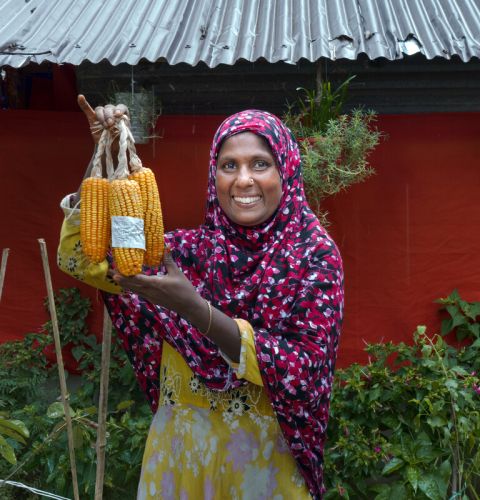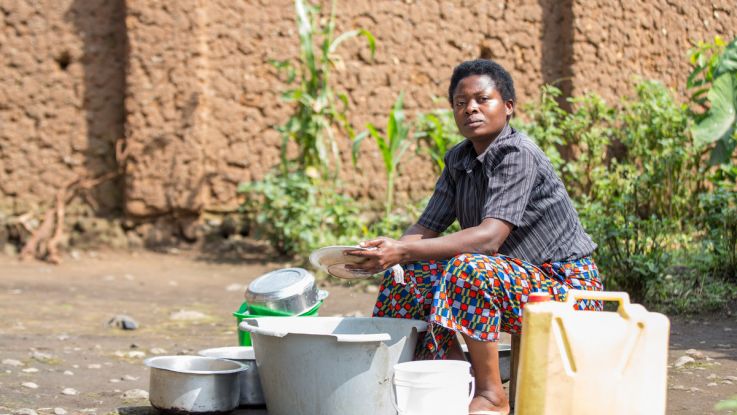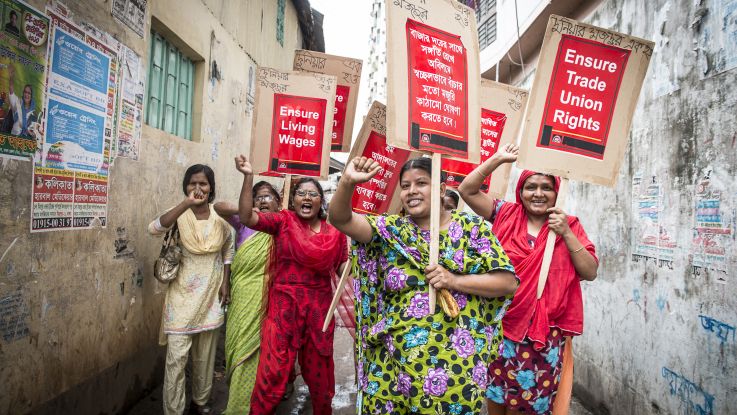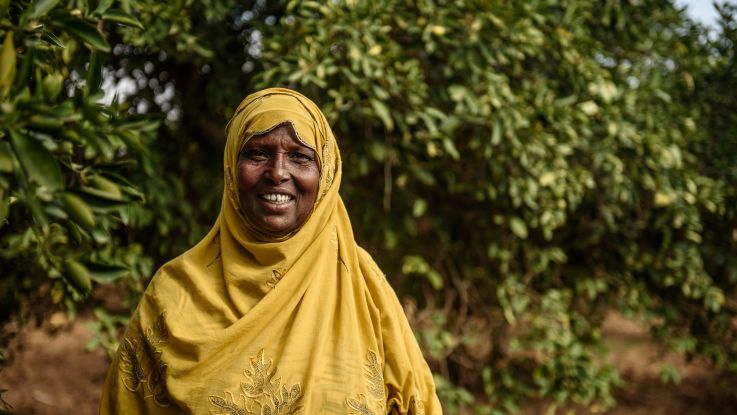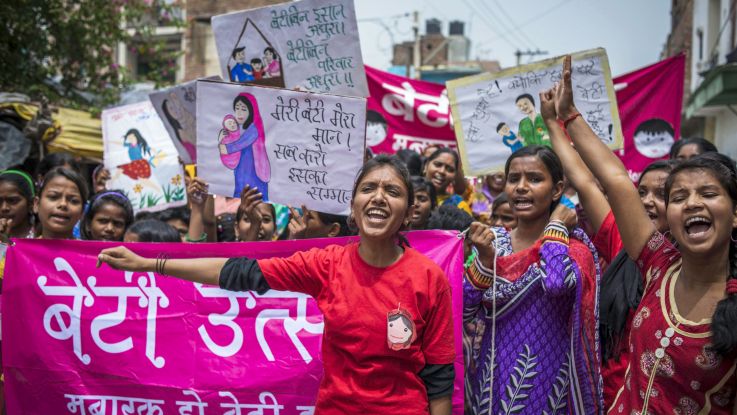Women’s economic justice
What is women's economic justice?
Women’s economic justice is the full realisation of women’s rights to participate in, benefit from, and shape economic systems and decisions—free from violence, exploitation, and discrimination.
It goes beyond individual economic empowerment to focus on changing structural inequality, including patriarchy, capitalism, colonialism, and neoliberalism.
Why do we need women's economic justice?
For decades, women around the world have been confronting a global economic system that is set against them, with barriers to decent and dignified work, few opportunities and protections of their labour rights, poor access to quality and affordable healthcare, and education, unstable incomes, and emotional stress.
These struggles are often even greater for Black, Brown, migrant and Indigenous women—both in the Global South and in richer countries like those in Europe and North America.
Governments around the world have responded to economic problems with budget cuts, especially in healthcare, childcare, and decent work programmes, primarily in response to coercive economic advice from International Financial Institutions. These cuts hit women the hardest, making it even more difficult for them to support themselves and their families.
In many ways, the global economy depends on labour from women of colour, especially from the Global South — continuing old patterns of exploitation that go back to colonial times. Their labour is often unpaid, unrecognised and undervalued.
True women's economic justice requires a decolonial, feminist and just economic system, which we call feminist wellbeing economies (FWE). Find out what we mean by feminist wellbeing economies below.
While empowering women individually is essential and a vital step toward gender equality, it is not sufficient on its own. It can place the burden on individuals, ignores structural inequalities, and often fails to deliver lasting change.
As long as the underlying systems and institutional structures that enable the economic exploitation of women remain intact, progress will be limited and challenging.
To create meaningful and lasting change, we need to address the root causes of economic injustice — including unequal access to resources, discriminatory labour practices, entrenched social norms that devalue women's work and by tackling the interconnected issues that shape women’s lives.
Only by dismantling these systemic barriers can we ensure that economic empowerment is both transformative and sustainable.
ActionAid embraces a human rights-based and systems change approach to women's economic justice.
What are feminist wellbeing economies?
A feminist wellbeing economy (FWE) is an economic system that puts people and the planet first instead of growth and profits.
ActionAid's work on feminist economic justice challenges the idea that there is only one way to run an economy.
We support alternative approaches developed by feminist economists, activists, women’s rights organisations (WROs), and social movements— that centre care, sustainability, dignity, and collective wellbeing rather than profit and growth at all cost.
The FWE is about more than just getting women better jobs. It means rethinking how the whole global economy works. It means challenging harmful practices like tax evasion, environmental destruction, and the exploitation of natural resources. It also means using new ways to measure progress — like wellbeing and community health, not just money.4
Achieving economic justice for women requires deep, structural change. It means listening to women’s voices, valuing their work (paid and unpaid), and making sure economic systems work for everyone—not just the wealthy few.
As the world continues to rebuild amidst multiple crises — including conflict, public health, and climate — we believe this is a crucial moment to reimagine economies that are just, sustainable and feminist.
Our work supports the leadership of women and girls — especially those from the most marginalised communities — to demand accountability, claim their rights, and collectively drive structural change.
ActionAid's commitment to women's economic justice
We are committed to transforming the global economic system so that it works for women and girls in all their diversity.
For too long, the existing economic system has reinforced gender inequality, exploited women's labour, and deepened power imbalances — both within countries and between the Global North and Global South.
At ActionAid UK, we support women's rights organisations in:
- Valuing all forms of women’s work, especially unpaid and underpaid care work.
- Ensuring access to decent work, living wages, and social protection.
- Securing public services — like health, education, and childcare —that are gender-responsive and adequately funded.
- Redistributing power and resources, including across the Global North and South.
- Challenging and dismantling the economic, social and political systems that maintain women's exclusion and exploitation.

Shilpy is a women's leader trained in one of ActionAid's Rights Cafes in Savar, Bangladesh.
Nicola Bailey/ActionAid
The women’s rights organisations transforming work in Bangladesh
Shilpy joined her parents in a factory in Bangladesh when she was just 12.
"Garment workers were never respected in our society” she says. “We used to work 14 or 15 hour days, we didn’t get any leave, and often the wages we did earn were paid a month late.”
ActionAid has set up 'Rights Cafes' next to garment factories in Bangladesh. At the cafes, female workers get together to learn about their legal rights, organise peaceful protests and lobby the government over their working conditions.
After two years at the cafe, Shilpy became the leader of a women's group and now helps to educate other women about their rights.
Now they don’t delay paying our salary; and they pay us our overtime accurately. There is also no abuse on the garment floor anymore. The line manager used to shout at us all the time and we would get beaten. There were also cases of sexual harassment. But now this can’t happen because we know it is wrong."

Building power through the Young Urban Women Programme
Lerato, a young mother and member of the Young Urban Women (YUW) Blantyre club, is a passionate advocate for women’s rights in her region.
The Young Urban Women (YUW) programme places a commitment to building the active agency of young women living in poverty. This includes addressing young women’s access to decent work and sexual and reproductive services through empowerment, campaigning and solidarity.
From challenging gendered stereotypes to demanding better funding for health services and access to education, Lerato is calling for investment in healthcare, and equality in the classroom. Her advocacy is shaping a future where women lead, speak, and thrive — economically, socially, and politically.
The most important thing I've learned is for a woman to be independent, not to rely on someone else.”
Young Urban Women (YUW) Lerato a member of YUW Blantyre.
Thoko Chikondi / ActionAid
Footnotes
- 1
The Human Cost of Public Cuts in Africa. https://actionaid.org/publications/2025/human-cost-public-cuts-africa
- 2
The Human Cost of Public Cuts in Africa. https://actionaid.org/publications/2025/human-cost-public-cuts-africa
- 3
UN Women ‘Progress of the world’s women 2015-2016, transforming economies, realising rights.
- 4
https://www.actionaid.org.uk/publications/feminist-wellbeing-economies
Page updated 2 December 2025
